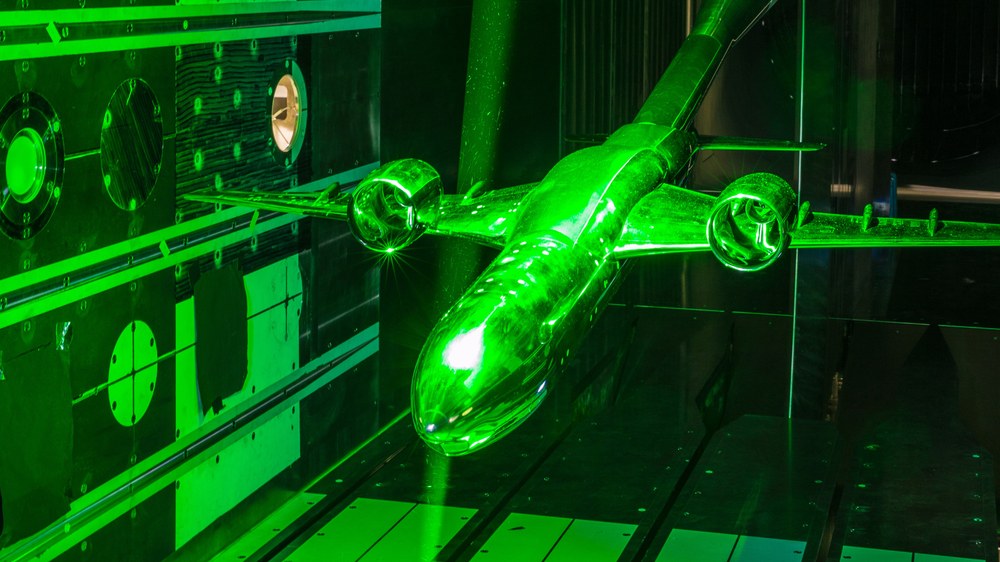Measurement Techniques

Measurement Techniques and experimental Validation
Advanced imaging and acoustic measurement techniques have become standard in experimental aerospace and ground transportation studies. Our Institute plays a leading role in the development and efficient application of such advanced measuring technologies. Using worldwide unique methods, we are developing a range of complementary imaging measurement methods for mobile use in wind tunnels and flight experiments. The Institute has long-standing experience in test campaigns and in-flight tests through national and international research projects and industrial contracts. The combined use of optical and acoustic measurement technologies allows for the quantification of various measurement categories relating to fluid mechanics, aeroacoustics and aeroelasticity. These transient measurement data are of great importance for the development, verification and combination of simulation tools. When devising any experimental method, the goal is to increase the spatial and temporal resolution and improve accuracy and reliability. One area of focus for this work is applying these newly developed methods within the demanding environment of industrial wind tunnels and flight tests. Numerous techniques are being investigated and advanced with a view to obtaining information such as dynamic surface pressures, wing and propeller deformation, thermal structural loads, density gradients of vortices in aircraft wings, boundary layer transitions on rotor blades and the vortex structure of helicopter rotors. These techniques include image-based techniques such as oil film interferometry; TSP and PSP; microphone array and MEMS technologies; PIV and STB techniques; iTSP and iPSP; and infrared thermography.
